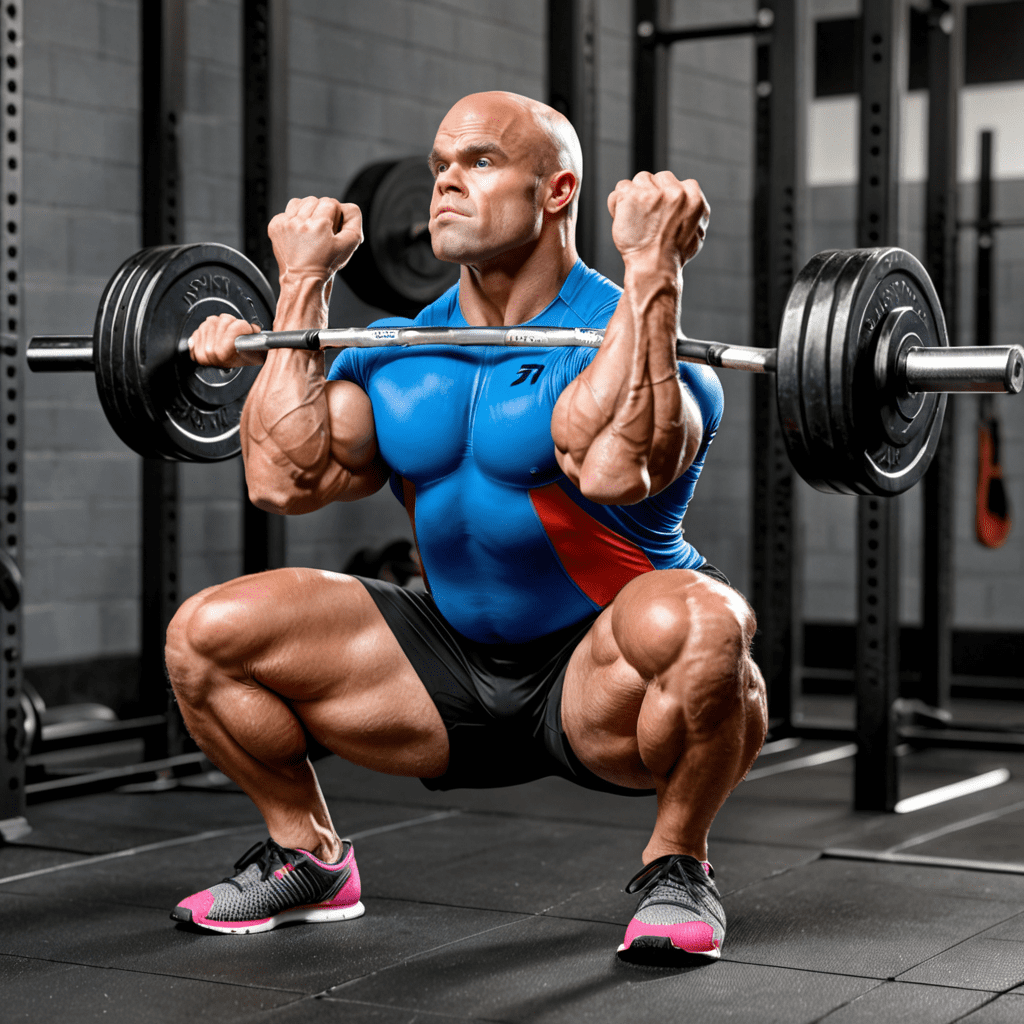
How to Front Squat Grip: Mastering the Technique for Optimal Performance
When it comes to front squats, mastering the grip is crucial for optimal performance and safety. Unlike the back squat, where the barbell rests on your upper back, the front squat involves positioning the barbell on the front of your shoulders. This unique grip challenges your core, upper back, and quadriceps, making it an effective exercise for building strength and muscle. In this article, we will guide you through the different grip options and help you choose the one that suits you best.
1. Clean Grip
The most common grip for front squats is the clean grip, also known as the “rack” position. To perform the clean grip:
- Start by approaching the barbell and position your hands slightly wider than shoulder-width apart.
- With your palms facing upwards, bend your elbows and lift the barbell onto your front deltoids, resting it on your fingertips.
- Cross your arms in front of your body, keeping your elbows high and parallel to the ground.
- Use your fingers and wrists to secure the barbell in place, maintaining a tight grip throughout the movement.
- Position your feet shoulder-width apart and perform the front squat, maintaining a proper squatting form.
The clean grip offers stability and control, allowing you to maintain an upright torso throughout the exercise. However, it requires sufficient wrist flexibility and can initially feel uncomfortable for some individuals.
2. Crossed Arm Grip
If you find the clean grip challenging due to limited wrist mobility, the crossed arm grip is an alternative option:
- Begin by grabbing the barbell with a slightly wider-than-shoulder-width grip.
- Position the barbell across the front of your shoulders, resting it on your fingertips.
- Cross your arms in front of your body, placing the back of your hands on top of the barbell.
- Ensure your elbows are high and parallel to the ground, maintaining a secure grip with your fingers and wrists.
- Adopt the correct squatting form and perform the front squat, being mindful of maintaining proper technique.
The crossed arm grip allows individuals with wrist flexibility issues to still perform front squats effectively. However, it may feel less stable compared to the clean grip, so practice is necessary to develop familiarity and control.
3. Straps Grip
For those who struggle with both wrist flexibility and arm mobility, using lifting straps can help achieve a stable grip:
- Begin by wrapping the lifting straps around the barbell, making sure they are securely attached.
- Position the straps across the front of your shoulders, aligning them with your collarbone.
- Hold onto the lifting straps near their ends, gripping them tightly.
- Maintain an upright torso and squat down with proper form, keeping the barbell stable throughout the movement.
Using lifting straps for front squats provides a secure grip, regardless of wrist and arm limitations. However, it is important to note that relying solely on straps can hinder grip strength development, so it is advisable to incorporate other grip options whenever possible.
4. Mixed Grip
Another grip variation for front squats is the mixed grip, commonly used in deadlifts. Here’s how to perform it:
- Start by gripping the barbell with one hand using the clean grip technique.
- With your other hand, position it across the front of the shoulders in the crossed arm grip.
- Maintain an upright torso, ensuring the barbell is secure, and perform the front squat with proper technique.
The mixed grip offers stability and can alleviate discomfort for individuals with limited mobility or flexibility in one arm. However, it may take time to adjust to this grip variation, so practice with light weights before progressing to heavier loads.
5. Safety Tips
Regardless of the grip option you choose, it is essential to consider these safety tips when performing front squats:
- Warm up adequately before starting your workout to prepare your muscles and joints.
- Engage your core and maintain an upright torso throughout the movement.
- Practice proper breathing techniques, inhaling on the descent and exhaling on the ascent.
- Start with lighter weights to focus on mastering the grip and technique before progressing to heavier loads.
- Gradually increase the weight while ensuring that you can maintain proper form and control.
- Seek guidance from a qualified fitness professional if you are new to front squats or have any concerns about your technique.
Frequently Asked Questions (FAQ)
Q: Are there any alternatives to front squats if I cannot perform them due to wrist or mobility issues?
A: If performing front squats is challenging due to wrist or mobility issues, there are alternative exercises you can try. Goblet squats, kettlebell front squats, or dumbbell squats can provide similar benefits while requiring less wrist flexibility.
Q: Can I use straps for every set of front squats?
A: While lifting straps can be used occasionally to accommodate limited flexibility or mobility, it is generally recommended to develop proper grip strength and use straps sparingly. Strive to improve your wrist and arm mobility over time, gradually reducing the dependency on straps.
Q: How long does it take to develop wrist flexibility for the clean grip?
A: The time required to develop wrist flexibility for the clean grip can vary from individual to individual. Consistent stretching exercises targeting the wrists, such as wrist flexion and extension stretches, can help improve flexibility over time. Be patient and listen to your body, gradually progressing as you feel comfortable.
Mastering the front squat grip takes practice, patience, and an understanding of your individual limitations. Experiment with different grip options to find what works best for you, and focus on maintaining proper form and technique throughout your front squat workouts. With consistency and dedication, you’ll be on your way to achieving stronger, more stable front squats.


